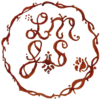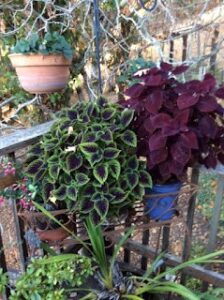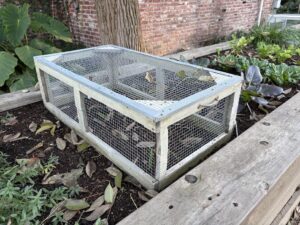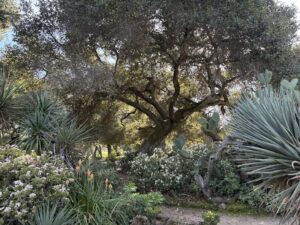Salvias (Sages) – what to do in winter
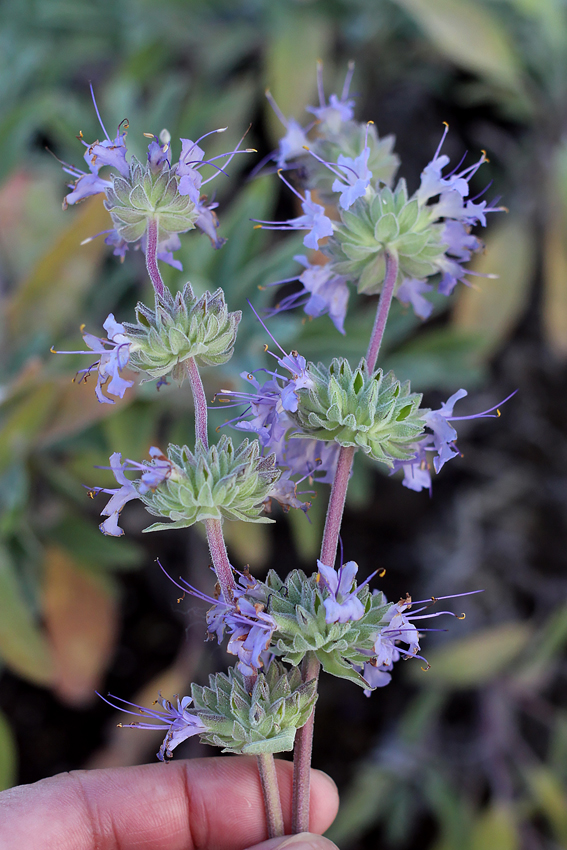
Cleveland Sage- flower
Salvias or Sages are the beloved garden perennials of hummingbirds, butterflies and bees These hardy, multi-season blooming plants are colorful and aromatic. There are so many hybrids now that I have a hard time keeping up with the new varieties. Not to be confused with the short lived annual types, the perennial low and medium shrub versions are long lasting and diverse. Many bloom in spring and again in fall.
There are a number of Sages that are hybridized from native plants that do well on dry hillsides. They tend to be woody shrubs or ground covers and don’t need as severe a pruning in winter. Examples of these are Salvia ‘Bees Bliss’, Salvia ‘Allen Chickering’, Salvia ‘Pozo Blue’ and Salvia ‘Clevelandii’ (flower shown above). For these shrubs I would just cut the dead flower heads plus 5-6″ of the top growth to keep the plants full and encourage the bloom cycle for the next year.
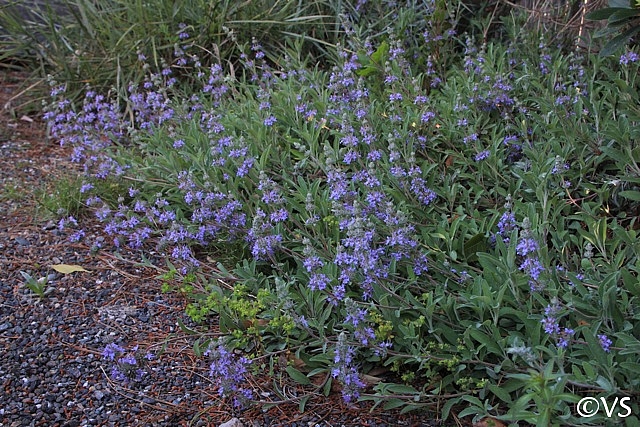
Salvia ‘bee’s bliss’

Salvia greggii ‘autumn moon’
The large genera of Salvia plants have aptitudes to both half light and full sun. Some are water loving but most like a dry location. Many are subject to frost damage. Drought tolerant Salvias like good drainage so planting them on a hillside or mound is helful where soils are heavy clay.
Check the Sunset Western Garden Book for information on zones and water requirements for any new salvias you purchase.
In the winter most perennial Salvias will go dormant with many having the whole top die back. All the soft shrub forms of Salvia should be pruned back at the tail end of the frost season (late February) to allow for the new top growth to develop. For many of the shrub forms, if look down at the base of the plant you will see the fresh shoots developing around the crown. Leaving the old top growth over winter helps to protect the new growth from freeze.
The good thing about plants that rejuvenate from the base or grow from the old wood is that you have a whole new, fresh top and flowering stalks each year. If not pruned back the plants will become woody and leggy and not bloom well or at all. The hummingbirds will be really mad too!
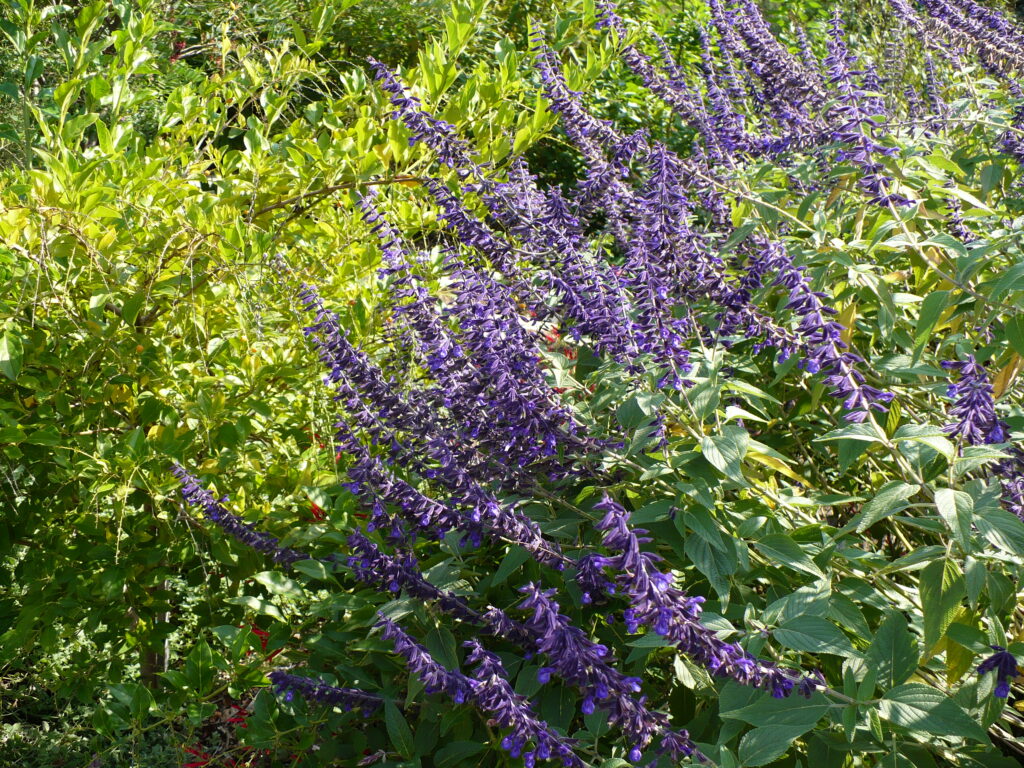
Salvia ‘blue and black’
During the growing season dead head (cut dead flower heads) back, plus about 2-4″ of the foliage to keep the plants looking fresh and promoting new blooms. Fertilize lightly with “Osmocote” or other all purpose fertilizer. They don’t need a lot of food or really much care.
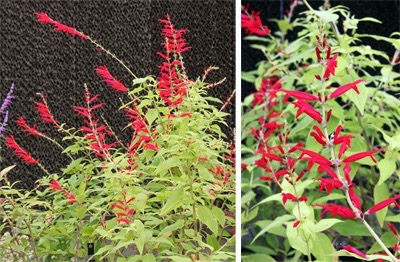
Pineapple Sage
Nepeta, teucrium, and daylilies have a similar type of care with the top growth dying back in winter and the new plants emerging from the base.
